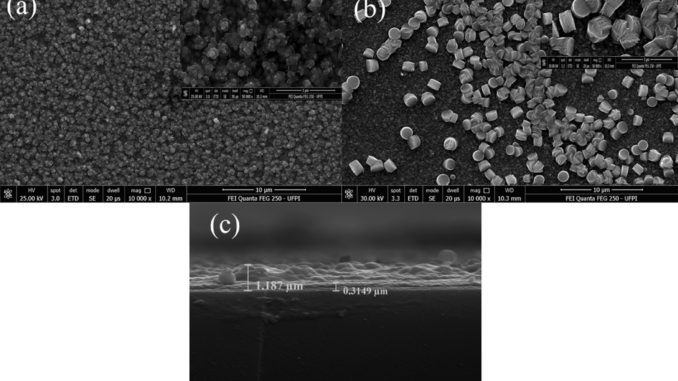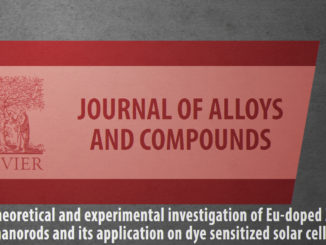
Enhanced photoelectrocatalytic performance of ZnO films doped with N2 by a facile electrochemical method
Abstract: In the present study, we investigated the structural, morphological, photoelectrochemical, and photocatalytic properties of zinc oxide (ZnO) and ZnO films, which were prepared in the presence of nitrogen (N2) on fluorine-doped tin oxide (FTO)-conducting glass by electrodeposition and N2 bubbling for the doped films (Zn:N). The time, N2 flow, and calcination temperature conditions were investigated. X-ray diffraction (XRD) patterns show that ZnO and ZnO:N films have a wurtzite structure. X-ray photoelectron spectroscopy (XPS) analysis confirms nitrogen doped ZnO by both the interstitial and substitutional manners. Values at 3.25–3.27 eV of band gap energy of the films were estimated by the Tauc method. Field Emission Scanning Electron Microscopy (FE-SEM) images illustrated a change in the morphology of the ZnO:N film in relation to the ZnO film. Photoelectrochemical studies demonstrated a better photocurrent density for pure ZnO and ZnO:N films using a 20 cm3 min−1 flow rate treated at 500°C with ca. 48 and 70 µA cm−2 (0.7 V vs. Ag/AgCl), respectively. ZnO and ZnO:N electrodes (20 cm3 min−1) were used to degrade an aqueous 0.48 mg L−1 Rhodamine B (RhB) dye aqueous solution under polychromatic irradiation for 165 min. The degradation study was investigated under heterogeneous photocatalysis (HP) and electrochemically assisted HP (EHP) photocatalysis conditions. For RhB dye photodegradation, the performances obtained were 19% and 36% in HP for ZnO and ZnO:N, respectively. For the EHP configuration with a +0.7 V bias vs Ag/AgCl, the values were 26% and 43% for ZnO and ZnO:N, respectively. The studies presented here reveal that the N-doped ZnO films are promising candidates as photoanodes for photoelectrocatalysis applications.
Author(s): Reis, R.Y.N.; Lima, A.E.B.; Costa, M.J.S.; Cruz-Filho, J.F.; Moura, J.P.C.; Santos, R.S.; Jr, G.E.L.
Surfaces and Interfaces
Published: December 2020, Volume 21, 100675
DOI: https://doi.org/10.1016/j.surfin.2020.100675




